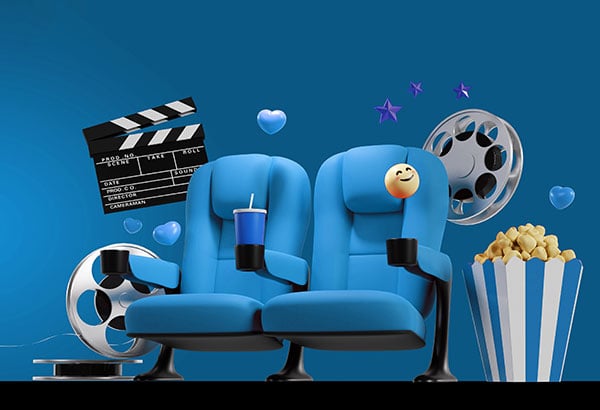The Impact of 3D Movie Cinema on the Film Industry
The world of cinema is constantly evolving, driven by advancements in technology and the desire to provide audiences with immersive and entrancing experiences. In recent years, 3D movies have played a significant role in this evolution, revolutionising the way we perceive and engage with films. With their ability to transport viewers into a three-dimensional world, 3D movies have captured the imagination of audiences worldwide, creating a new standard for visual storytelling.
Capturing the Third Dimension: The Rise of 3D Cinema Movies
The concept of 3D movies dates back several decades, but it was in the early 2000s that they gained widespread popularity and became a significant part of the film industry. With advancements in digital projection and the introduction of stereoscopic technology, filmmakers were able to create stunning visuals that brought characters and landscapes to life in unprecedented ways. The rise of 3D cinema marked a turning point in filmmaking, offering a new dimension of storytelling and captivating audiences with its immersive nature.
The Genesis of 3D Cinema: Understanding the Beginning
The first 3D film, "The Power of Love," was showcased in 1922, introducing audiences to the potential of three-dimensional visuals. However, it wasn't until the 1950s that 3D movies gained significant attention with films like "Bwana Devil" and "House of Wax." These early experiments with 3D laid the foundation for the advancements to come, paving the way for the modern era of 3D cinema.
The Leap from 2D to 3D: Changing Perspectives in Filmmaking
The transition from traditional 2D filmmaking to 3D was a transformative moment in the industry. Filmmakers realised that 3D technology had the power to enhance storytelling, immersing viewers in the narrative and bringing them closer to the action on the screen. With the advent of digital 3D projection systems and the introduction of specialised cameras and post-production techniques, filmmakers could now create a depth and realism that was previously unimaginable.
Technological Innovations: The Role of 3D Film Cameras
Central to the success of 3D cinema is the use of specialised 3D film cameras. These cameras capture scenes from two slightly different angles, mimicking the way our eyes perceive depth. By merging the two perspectives, the result is a stereoscopic image that creates the illusion of three-dimensionality. The advancements in 3D film camera technology have significantly contributed to the immersive and visually stunning experiences that 3D movies offer.
From Static to Dynamic: How 3D Film Cameras Revolutionised Cinematic Experiences
3D film cameras have played a pivotal role in revolutionising the way movies are made and experienced. These advanced cameras have enabled filmmakers to push the boundaries of visual storytelling, creating dynamic and immersive scenes that captivate audiences like never before. By capturing depth and perspective with precision, 3D film cameras have brought a new level of realism and engagement to the silver screen.
In the early days of 3D cinema, static cameras were used, limiting the movement and versatility of filming techniques. However, with advancements in technology, the introduction of lightweight and versatile 3D film cameras has transformed the filmmaking process. These cameras are equipped with dual-lens systems that replicate the human eye's binocular vision, capturing two slightly offset perspectives simultaneously. This evolution is called stereoscopic imagery. Let’s unpack that, and a few more of these technological advancements.
Stereoscopic imagery
The synchronised lenses of 3D film cameras allow for the creation of stereoscopic imagery, where each eye receives a slightly different image. This mimics the way our eyes perceive depth in the real world, resulting in a more immersive and realistic viewing experience. Filmmakers can now explore creative camera movements, capture dynamic action sequences, and compose shots that emphasis depth and perspective.
Using the third dimension for enhanced storytelling
The use of 3D film cameras has revolutionised the way filmmakers approach storytelling. They can now convey emotions and narratives with enhanced visual impact, utilising the added dimension to draw viewers into the heart of the story. Filmmakers can strategically employ depth and perspective to guide the audience's attention, create a sense of scale, and immerse them in the film's world.
With each passing year, advancements in camera technology continue to refine and enhance the quality of 3D movies. Manufacturers strive to develop more compact, lightweight, and user-friendly cameras that offer increased resolution and improved image quality. These advancements enable filmmakers to capture intricate details, vivid colours, and stunning visuals that translate seamlessly onto the big screen.
More magic in post-production
Additionally, the advent of digital 3D cameras has further expanded the possibilities for filmmakers. Digital cameras provide greater flexibility in post-production, allowing for precise adjustments and fine-tuning of the 3D effects. Filmmakers can refine the depth and dimensionality of scenes, ensuring optimal visual impact and viewer engagement.
The Evolution of 3D Animated Films: Redefining Visual Storytelling
The evolution of 3D animated films has revolutionised the world of visual storytelling, pushing the boundaries of creativity and technology to new heights. These films have undergone a remarkable transformation, showcasing advancements that have captivated audiences and redefined the animated medium.
Toy Story
Although there were animated films before it, perhaps the best example of how 3D animation can impact mainstream storytelling, started with the endearing simplicity of "Toy Story," where pioneering computer-generated imagery (CGI) brought beloved characters to life in a groundbreaking way. As technology advanced, so did the artistry and sophistication of 3D animated films. With each new release, the medium evolved, embracing more complex narratives, intricate character designs, and breathtaking visual landscapes.
From cartoon to influential cinema
From the whimsical wonderlands of Pixar's imaginative tales to the awe-inspiring photorealism of Disney's reimagined classics, 3D animated films have continuously raised the bar in visual storytelling. They have transformed from mere cartoons to immersive cinematic experiences, transporting viewers into intricately crafted worlds filled with rich textures, vibrant colours, and lifelike animations.
The evolution of 3D animated films can be seen not only in the technical advancements but also in the maturity and depth of storytelling. These films now tackle complex themes, resonate with audiences of all ages, and elicit genuine emotions. They have become vehicles for powerful narratives, exploring love, friendship, courage, and the human experience in ways that resonate deeply with viewers.
Innovation in artistry
The evolution of 3D animated films has been driven by the continuous pursuit of innovation. Filmmakers and animators have embraced new technologies, such as motion capture and virtual reality, to enhance the realism and immersive qualities of their creations. As a result, audiences have been treated to increasingly immersive and visually stunning experiences.
The impact of 3D animated films on the film industry cannot be understated. They have not only captured the hearts of viewers but have also set new standards for animation as an art form. The evolution of these films has inspired a generation of animators and storytellers, powering their imagination and pushing them to explore the limitless possibilities of 3D animation.
As we look to the future, the evolution of 3D animated films shows no signs of slowing down. With advancements in technology and storytelling techniques, we can anticipate even more visually spectacular and emotionally resonant films to come. The journey of 3D animated films is an ongoing one, continuously pushing the boundaries of what is possible and redefining the art of visual storytelling for generations to come.
The Continuing Influence of 3D Cinema on the Film Industry
As technology continues to advance, the influence of 3D cinema on the film industry shows no signs of slowing down. Filmmakers and studios are constantly exploring new ways to push the boundaries of 3D storytelling, creating even more immersive and engaging experiences for audiences. The impact of 3D cinema will continue to shape the industry, driving innovation and enthralling viewers with its ability to transport them into new worlds.
3D Movies: A Driving Force for Cinemas Like Ster-Kinekor
Cinemas have embraced the popularity of 3D movies, recognising their potential to attract audiences and provide a unique cinematic experience. The introduction of 3D screenings has allowed theatres like Ster-Kinekor to offer a premium option for moviegoers. By providing state-of-the-art 3D projection systems and a selection of 3D films, we’ve positioned ourselves as a leader in delivering immersive and visually stunning movie experiences.
Experience the Magic of 3D Cinema with Ster-Kinekor
If you're eager to experience the magic of 3D cinema firsthand, Ster-Kinekor is the perfect destination. With state-of-the-art projection systems and a diverse selection of 3D films, Ster-Kinekor offers a premium cinematic experience that will leave you awe-inspired. Step into a world of depth and realism as you immerse yourself in the compelling narratives and stunning visuals of the latest 3D movies.

